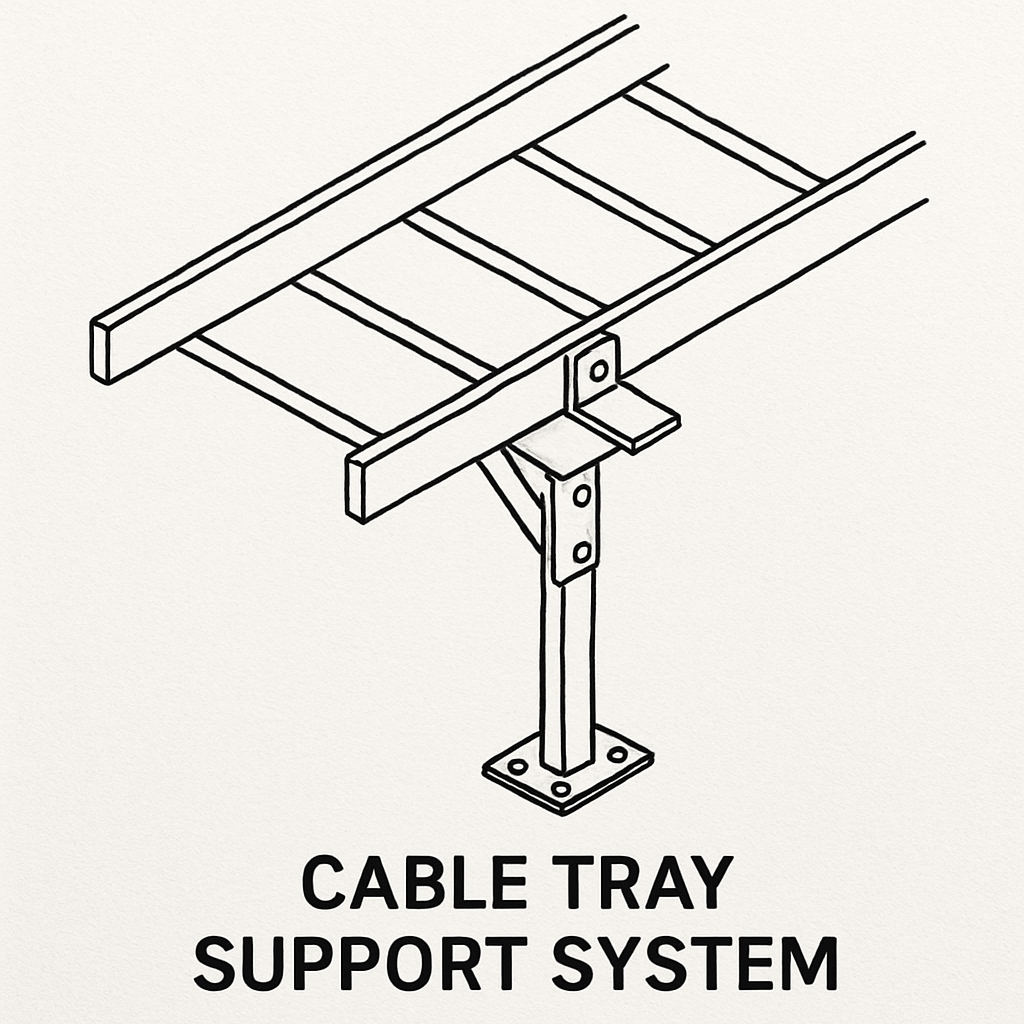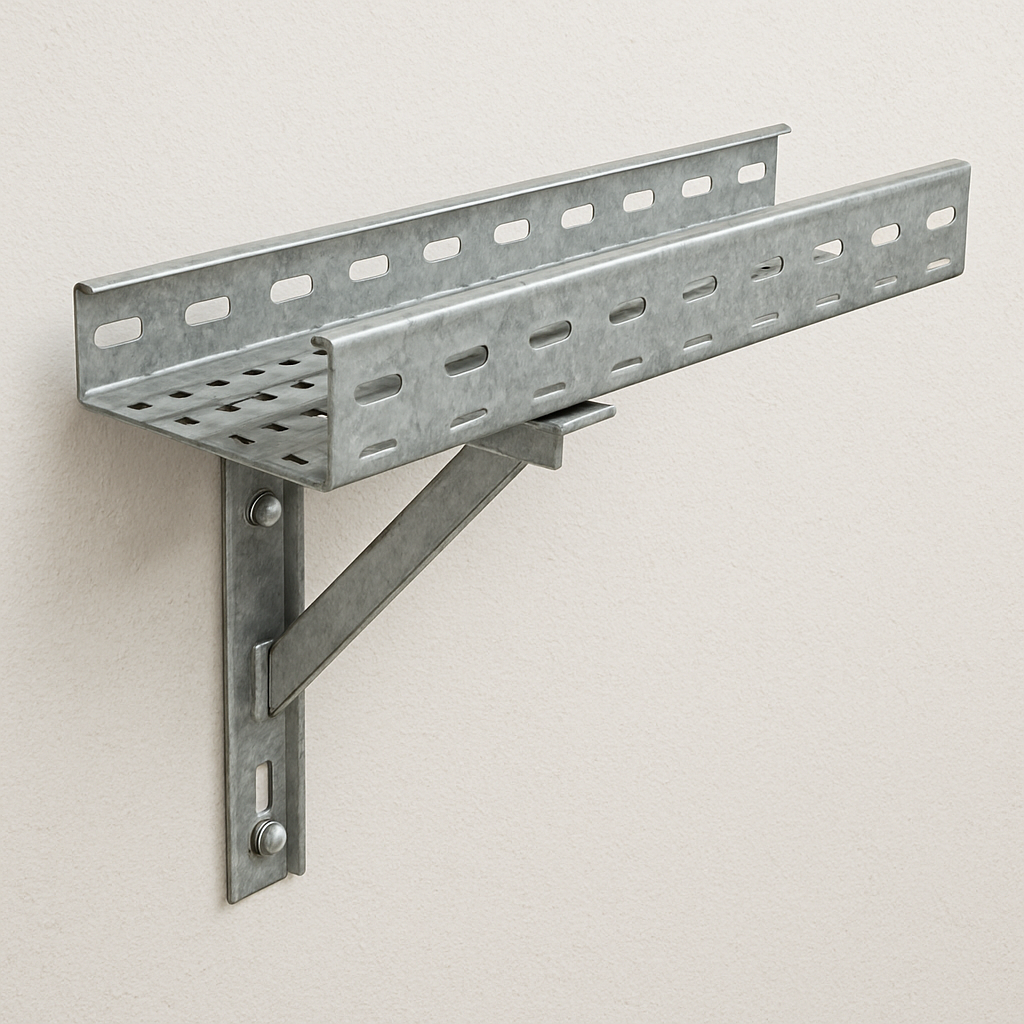In modern construction and industrial environments, cable management is crucial. One of the most efficient ways to manage and support cables is through cable tray systems. These systems ensure that cables are organized, protected, and easily accessible for maintenance. This article will guide you through the various types of cable tray support structures, their installation, and their importance in cable management solutions.
Cable tray support structures are the backbone of any cable tray system. They provide the necessary support for cable trays, ensuring stability and safety. These structures can be installed in various configurations depending on the specific needs of a project.
Why Are Cable Tray Supports Important?
Cable tray supports are critical for several reasons:
- Safety: Proper support reduces the risk of cable sagging, which can lead to electrical hazards.
- Organization: Supports keep cables organized and prevent tangling.
- Accessibility: Well-supported trays make it easier to access cables for maintenance and upgrades.
Types of Cable Tray Support Structures
There are several types of cable tray support structures, each designed for different applications and environments.
Hanger Support for Cable Trays
Hanger supports are a popular choice for suspending cable trays from ceilings. They are ideal for environments where floor space is limited or where a clean, unobtrusive installation is desired. Hanger supports are usually adjustable, allowing for flexibility in installation.
Wall-Mounted Cable Tray Supports
Wall-mounted supports are used when cable trays need to be installed against walls. These supports are perfect for facilities with existing wall space and are commonly used in data centers and industrial settings.
Floor-Mounted Cable Tray Supports
Floor-mounted supports are used when ceiling or wall installation is not feasible. These supports are ideal for large industrial environments where cables need to be routed along the floor.
Unistrut Cable Tray Supports
Unistrut systems offer a versatile solution for cable tray support. They can be used in a variety of configurations, including ceiling, wall, and floor installations. Unistrut systems are known for their durability and flexibility.
Vertical Cable Tray Supports
Vertical supports are essential for installations where cables need to be routed vertically, such as in multi-story buildings. These supports ensure that cables remain organized and secure during vertical runs.
Installation of Cable Tray Supports
The installation of cable tray supports is a crucial step in setting up an efficient cable management system. Here are some key considerations:
Cable Tray Support Spacing
The distance between cable tray supports is critical to the stability and safety of the system. Proper spacing ensures that the trays do not sag or become overloaded. The spacing will depend on the type of cable tray and the weight of the cables being supported.
Cable Tray Support Design
The design of the support structure should accommodate the specific needs of the installation. This includes considering the weight of the cables, the environment, and any potential obstacles.
Cable Tray Support Standards
Adhering to industry standards is essential for ensuring safety and compliance. Standards provide guidelines for the installation and maintenance of cable tray support systems.
Choosing the Right Cable Tray Support
Selecting the appropriate cable tray support structure depends on several factors:
- Environment: Consider the installation environment, including temperature, humidity, and exposure to chemicals.
- Load Requirements: Determine the weight and volume of cables to be supported.
- Flexibility: Some installations may require adjustable or modular support systems.
Advantages of Effective Cable Tray Support Systems
Implementing a well-designed cable tray support system offers numerous benefits:
- Reduced Maintenance Costs: Properly supported cables are less prone to damage, reducing maintenance needs.
- Enhanced Safety: Securely supported cables reduce the risk of accidents and electrical hazards.
- Increased Efficiency: Organized cables improve system efficiency and make troubleshooting easier.
by Mark Kats (https://unsplash.com/@bulava92)
Common Mistakes in Cable Tray Support Installation
Avoiding common mistakes during installation can save time and resources:
- Improper Spacing: Ensure supports are spaced correctly to prevent sagging.
- Ignoring Standards: Always follow industry standards and guidelines.
- Inadequate Support: Choose supports that can handle the weight and volume of the cables.
Conclusão
Cable tray support structures are an essential component of any cable management system. By understanding the different types of supports and their applications, you can ensure a safe, efficient, and organized installation. Whether you are working with a Hubbell cable tray ladder system, utilizing Unistrut supports, or installing a wall-mounted setup, the key is to plan carefully and adhere to best practices. With the right support structures in place, your cable management solutions will be robust and reliable, providing long-term benefits for your facility.
By investing in quality cable tray support systems, you can achieve a higher level of organization, safety, and efficiency in your cable management efforts. Whether you are dealing with industrial environments, data centers, or commercial buildings, the right support structures are fundamental to the success of your cable management strategy.



